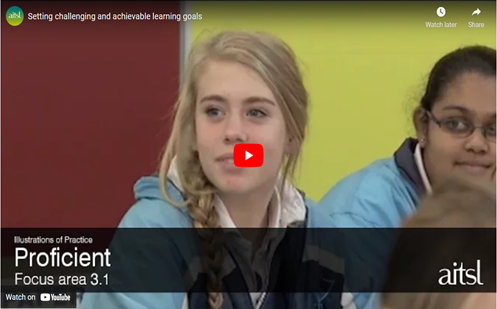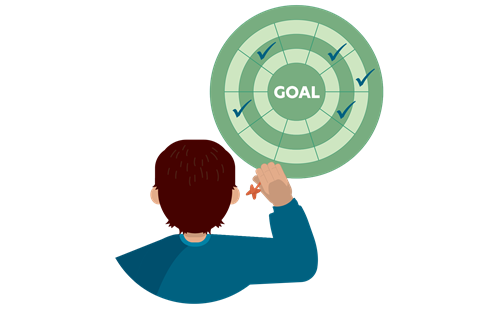Setting goals
Overview
Having a clear learning goal when planning a lesson or sequence of lessons ensures that learning activities are targeted towards the goal. Setting a clear learning goal communicates to the students what they are going to be learning in the lesson (or series of lessons) and how they will recognise that they have achieved the goal. The goal should be challenging but achievable for the students. It is better to set a whole-class goal and to differentiate by expected outcomes.
A learning goal has several different functions.
- It should be specific and measurable so that students (and the teacher) can know if the goals have been achieved in the lesson.
- It tells students what is important – a specific fact or a procedure.
- It should be linked to assessment.
- It should be referred to during the lesson to keep the learning on track.
- It should be used as a reflection tool (or exit slip) at the end of the lesson for students to indicate if they feel they have achieved the goal.
Watch this video, which provides a brief guide to setting goals and identifying success criteria.
The teacher:
- states or displays the goal(s) at the start of the lesson or unit
- refers back to the goal(s) throughout the lesson
- shows how the activities and assessment are linked to the goal(s)
- monitors students’ progress in relation to the goal(s)
- makes adjustments for specific students based on formative assessment evidence.
The students:
- understand the purpose of the lesson or unit
- know how they will demonstrate their learning by the end of the lesson or unit
- monitor their own progress.
Example of the strategy in action

Setting challenging and achievable learning goals
This article gives more detail on the research behind these techniques.
